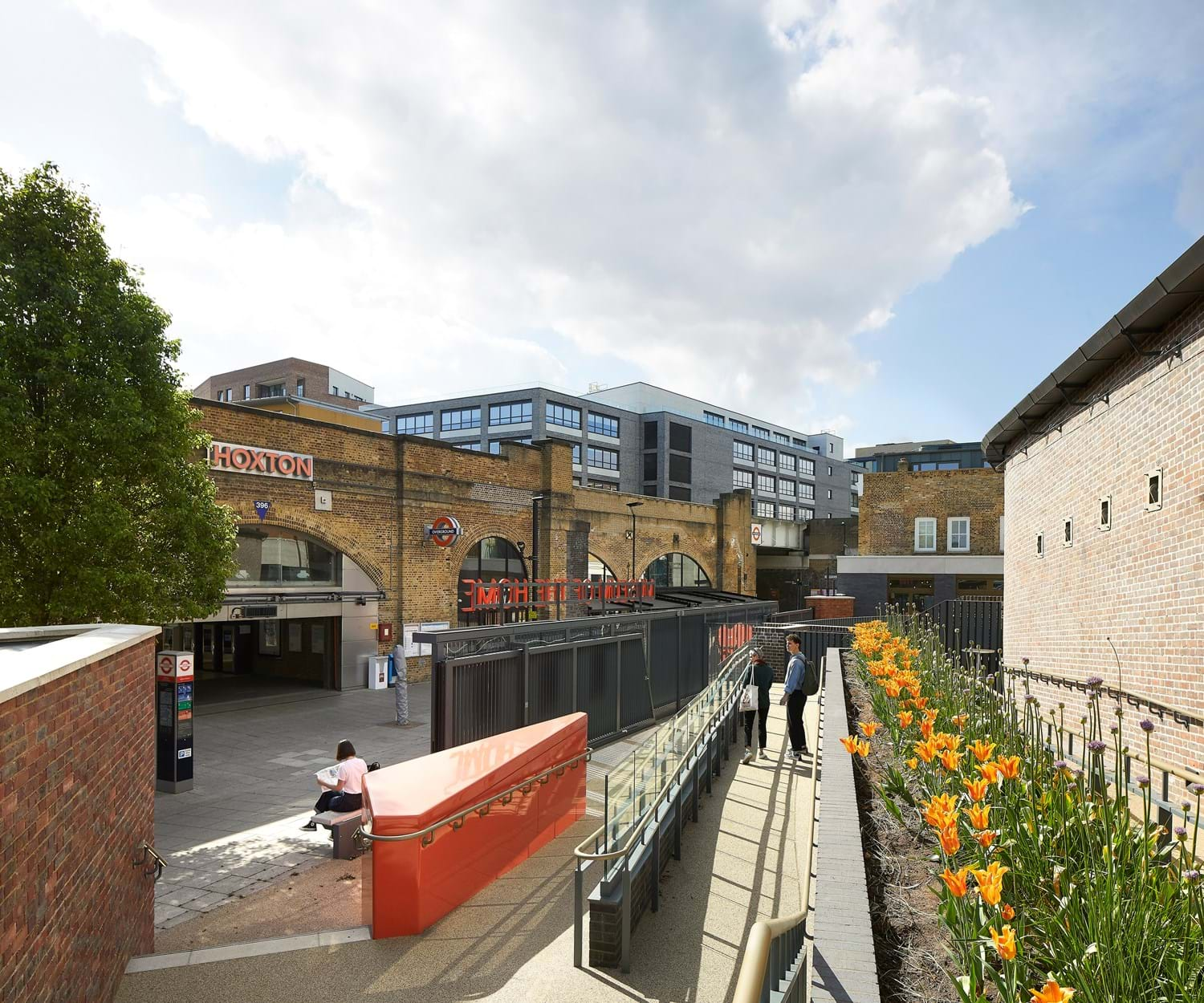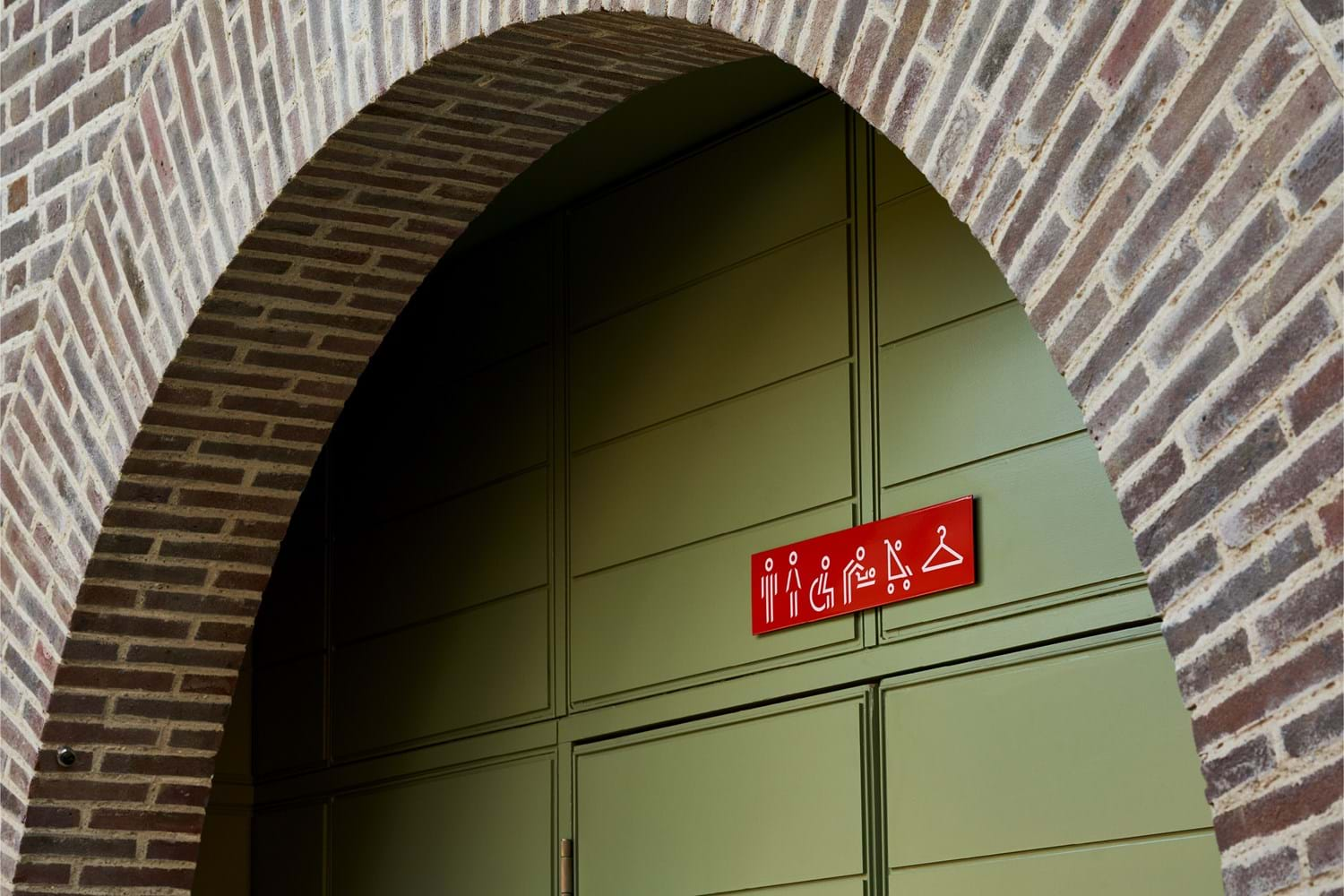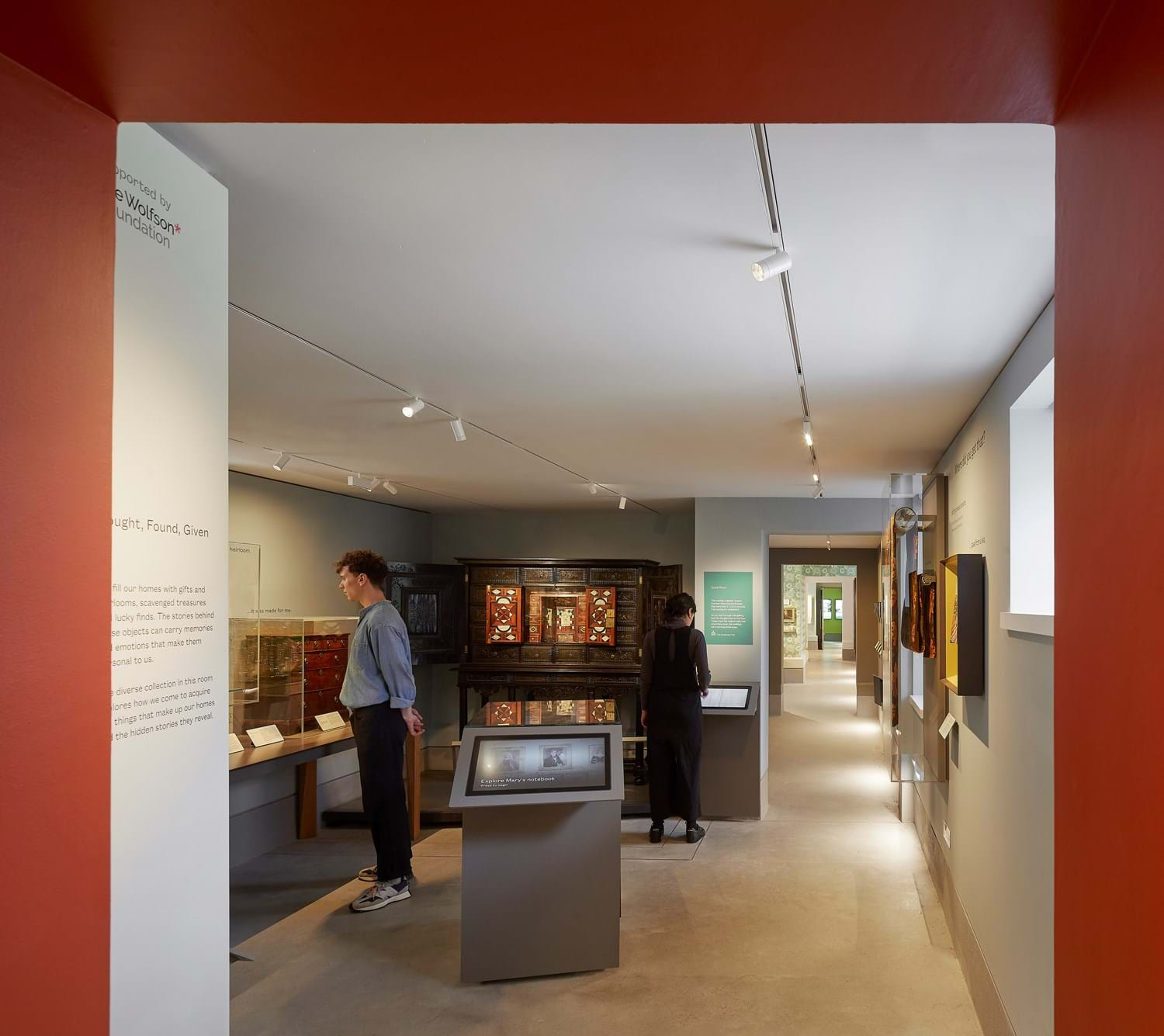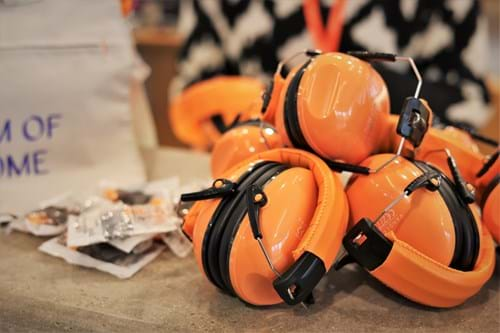Access
We are committed to ensuring an accessible experience for all our visitors. You will find lots of information below to help plan and prepare for your visit.
If you would like further help planning your visit please email bookings@museumofthehome.org.uk or call us on 020 7739 9893
 © Hufton + Crow / Wright & Wright Architects
© Hufton + Crow / Wright & Wright Architects
Where we are
The main Museum entrance is on Geffrye Street, directly opposite Hoxton Station (London Overground), and provides step-free access from trains to the Museum.
The what3words location for the main Museum entrance is puns.pints.dance https://what3words.com/puns.pints.dance
You can also enter the Museum from Kingsland Road. This is the best entrance to use if you are arriving by bus, using a Blue Badge parking bay and for drop-offs by car, coach or minibus. The Blue Badge parking bays allow parking for up to 3 hours, 10am–4pm. The bays are alongside the central Museum gates.
The what3words location for the Kingsland Road entrance is glad.lazy.middle https://what3words.com/glad.lazy.middle
Travelling to the Museum
We encourage visitors to walk, cycle or use public transport to the Museum where possible. Below you will find information on getting here by train, bus, car, and bike.
By train
The closest station to the main museum entrance is Hoxton (London Overground).
Hoxton Station has step free access and London Overground staff are available to assist passengers during museum opening times. You can find out more about accessibility at Hoxton Station here.
The distance from Hoxton Station to the main museum entrance is 10 metres.
Geffrye Street is a pedestrianised zone with no traffic. There is step-free access to the Museum from Geffrye Street. There is cobbled paving at the north end of Geffrye Street where it joins with Pearson Street.
By bus
The closest bus stops are on Kingsland Road. Buses 149, 242, 243 and 394 stop on Kingsland Road.
Buses from Aldgate, Old Street, Angel, Liverpool Street and Waterloo, towards Dalston Junction stop at ‘Hoxton Station / Museum of the Home (KA)’. The stop is on the opposite site of the road to the museum. The road has two lanes of traffic and can be busy. There is a pedestrian crossing near to the bus stop.
Buses towards Aldgate, Old Street, Angel, Liverpool Street and Waterloo stop at ‘Hoxton Station/ Museum of the Home (KN)’. This stop is on the same side of the road as the museum.
By car
There is no car park at the Museum and local on-street parking is limited.
The nearest Blue Badge parking bay is on Kingsland Road. Blue Badge holders may park in the Blue Badge parking bay for up to 3 hours between 10am and 4pm Monday to Sunday. The Blue Badge parking bay is on the same side of the road as the museum. The satnav address for the Blue Badge parking bays is 136 Kingsland Road, London E2 8EA.
If you need to park, use JustPark to find locations in Hoxton.
By bike
We have 8 bike racks in the Kingsland Road Gardens and there are Santander Cycle docking stations at Falkirk Street and Geffrye Street. We don't allow folding bikes inside.
By coach
In line with TfL guidance, coaches can use bus stop KN on Kingsland Road for drop off and pick up only. Parking and waiting are not permitted.
Arriving at the Museum
What to expect when arriving at the Museum from our main entrance or Kingsland Road entrance, into the welcome area.
Main entrance
There are 15 steps from Geffrye Street to the main entrance. There is also a ramp. The ramp is 45 m long in total. It is divided into four separate ramps, the longest of which is 14 m.
There are two sets of glass doors at the main entrance. To open each door, push the large metal button with a blue wheelchair symbol. The doors will open outwards, towards you.
Kingsland Road entrance
There are three pedestrian gates on Kingsland Road leading to a large area of the lawn. At the central gate a ramp leads from the pavement down to a smooth and level path.
The entrance is on the far right-hand corner of the lawn area when looking towards the Museum with your back to the road. The what3words location for this entrance is glad.lazy.middle
https://what3words.com/glad.lazy.middle
At the entrance three stone steps lead up from the path into the Museum. There is also a 6 m long ramp. The steps and the ramp lead to a glass door that opens automatically.
Reception
The main entrance and the Kingsland Road entrance both lead into a large reception area. Our team wear an orange lanyard. They will welcome you to the Museum and help you to start your visit.
In the reception space you can pick up a Welcome Guide that includes an introduction to our galleries and a map of the Museum. You can download the map to your own device here.
Tickets
Entrance to the Museum is free and you do not need a ticket.
When it is very busy, we might ask you to wait before entering the gallery spaces. This helps us to spread out visitors and create a more comfortable environment for everyone.
If you are attending a ticketed event at the Museum, you must book an e-ticket in advance online here. If there are any special instructions for your event these will be sent to you by email before your event starts.
During your visit
This section explains what facilities we have available, as well as what you can expect in our galleries and gardens.
 © DNCO
© DNCO
Facilities
Step-free access
There are passenger lifts between floors and a vertical platform lift from the Home Galleries to the Gardens Through Time. For step-free access to the Collections Display on the first floor please ask a member of our team for assistance.
Floors and paths
The floors inside the Museum are a mix of concrete, wood and carpet.The paths in our gardens are a mix of brick paving and resin-bound gravel. There are ramps between different levels of the gardens. Our team work hard to make sure our paving is swept regularly and gritted in cold weather.
Accessible and ambulant toilets
There is an accessible toilet suitable for wheelchair users in the reception area and three further accessible toilets across the Museum. All of our accessible toilets have a pull cord alarm.
There are also single-sex toilets in the reception area. The single-sex toilets each include one ambulatory cubicle. This is a larger cubicle fitted with grab rails suitable for individuals who may need more space but do not use a wheelchair.
The nearest Changing Places toilet is in Haggerston Park.
Borrow a wheelchair
Manual wheelchairs are available to borrow for use in our galleries and gardens. We do not operate a wheelchair booking system. If you would like to borrow a wheelchair, please ask at the information desk in the reception space when you arrive.
We have two manual transit wheelchairs and two manual self-propelled wheelchairs. All our wheelchairs are suitable for users up to 115kg, have a 45cm wide seat, footrests, solid tyres and parking brakes. Our object labels and interpretation text panels are placed at a suitable height for wheelchair users.
Mobility scooters
Mobility scooter users are welcome throughout the Museum. Some galleries are small and may be difficult to navigate in a Class 3 scooter due to their larger turning circle.
Hearing / induction loops
There is an induction loop at the Information desk in Reception. There are also induction loops in the following event spaces:
- Studio
- Learning Pavilion
- Georgian Suite
Guide, assistance and emotional support dogs
Guide, assistance and emotional support dogs – including dogs in training – are welcome at the Museum as long as they are working and wearing their tabard/harness, or by being identified as such to staff at the Welcome Desk.
Seating
There are backless benches in the reception space and park benches in our gardens. Lightweight folding stools are available to borrow at reception and in the gallery spaces. You may also use these in our gardens.
Drinking water
Drinking water is available from a tap in the Lunchroom, which is open to all.
 © Hufton + Crow / Wright & Wright Architects
© Hufton + Crow / Wright & Wright Architects
In the galleries
Large print guides
There are large print guides at reception and at the entrance of every gallery space.
Subtitles and BSL
All films produced by the Museum have subtitles or captions, and some have BSL interpretation. We are committed to providing transcripts or audio descriptions of video artworks and film installations for visitors to borrow.
Sensory resources
Child-sized ear-defenders and backpacks filled with sensory toys are available to borrow at Reception during your visit.

Quieter times and spaces
Our quietest times are usually weekday and Sunday afternoons after 3pm. Our busiest time is usually between 12pm and 3pm on Saturdays, bank holidays and during school holidays.
Some of our spaces, particularly the Home Galleries, are small and can feel busy. Quieter spaces away from the main galleries include the Lunch Room, Reading Lounge and the Gardens Through Time.
Flashing lights
Temporary exhibitions may include flashing lights that could trigger photosensitive migraine or epilepsy. Signage is in place to warn you before such spaces. Where possible, we make an alternative route available.
Lighting, temperature, smells and sounds
The lighting, temperature, smells and sounds vary across the museum. We have listed the main sensory features of each permanent gallery space below.
When we host a temporary exhibition, key sensory information will appear on our website and on signage before you enter the space.
Reception
- bright natural and artificial light
- cooler temperature
- well ventilated
- some alarms occasionally sound at the information desk
Home Galleries
- subdued artificial light
- warmer temperature
- some artificial smells in interactive exhibit
- some audio that plays out loud
- Mollspeak is an immersive, 11-channel sound installation that plays out loud
Rooms Through Time
- subdued natural light and subdued artificial light
- cooler temperature
- some artificial smells in gallery spaces
- some audio that plays out loud
Content warnings
We are committed to exploring the lived experiences of home by individuals and communities through time. This includes topics in our permanent and temporary exhibitions that some may find disturbing, including migration, grief, loss, and slavery.
- Love and Loss in the Home Galleries includes themes of death, mourning, disappearance and grief.
- The statue of Robert Geffrye on the Museum's buildings acknowledge his donation to build the almshouses and reflect the historic connection the Museum buildings have to Geffrye, an English merchant who made part of his money from his investment in transatlantic slavery. Geffrye is not connected to the founding of the Museum or its collections. Please click here to find out more about what we are doing to better reflect our values and be a welcome place for all.
Alarms and assistance in an emergency
You may hear alarm sounds near the Welcome desk in the reception area. These are managed by our staff and are nothing to worry about.
The fire alarm is a loud sound that you can hear throughout the building. There are also visual alarm indicators mounted on the ceiling that flash red when the alarm is active.
It’s unlikely that the fire alarm will sound during your visit. If it does, our team will show you the quickest and safest way to leave the building.
If we are planning a fire drill, signage will be in place in the reception area and our team will tell you what to expect when you arrive.
Digital guide
You can explore Museum of the Home through your own device with Bloomberg Connects, the free arts and culture app.
Web Accessibility
In addition to undergoing an access audit for the Museum, we continue to improve our web accessibility on www.museumofthehome.org.uk
You can find our accessibility statement here.
Should you find we are not meeting requirements or would like to make a suggestion that could improve your online experience, please contact our team at digital@museumofthehome.org.uk
We are learning how to make our Museum more accessible. If you would like to make a suggestion please email feedback@museumofthehome.org.uk
Support the Museum
With your help we can use our collections and programmes to reveal and rethink the ways we live, in order to live better together.
